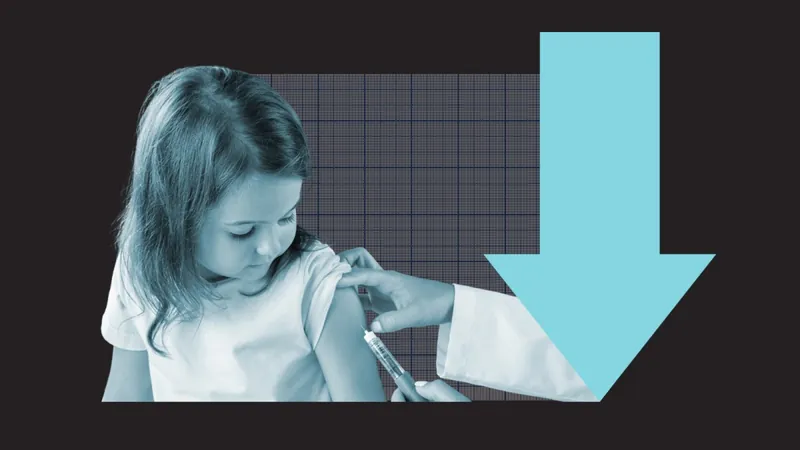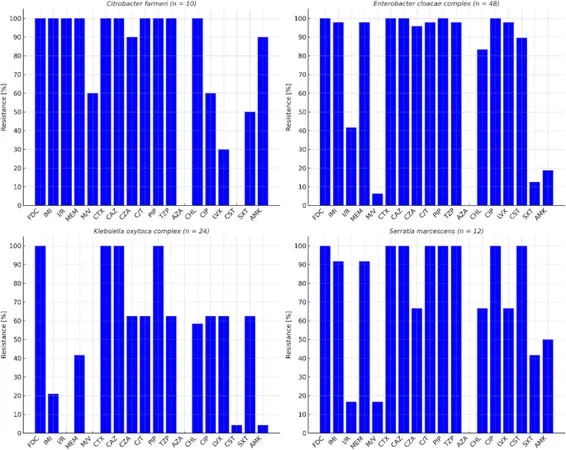
Shocking Gaps in US Stroke Rehabilitation: Are Patients Being Left Behind?
2025-08-07
Author: Mei
Uncovering the Crisis in Stroke Rehabilitation
A groundbreaking policy statement from the American Heart Association (AHA) and the American Stroke Association (ASA) reveals some troubling truths about the US stroke rehabilitation system. According to their findings, a patient’s access to crucial rehabilitation services post-stroke is often influenced more by their race, ethnicity, income level, and geographic location than by their actual medical needs.
Committee chair Dr. Nneka L. Ifejika from the University of Texas Southwestern Medical Center expresses deep concern over the widening gaps in postacute care (PAC) access. This stark revelation marks a pivotal moment, as it's the first time these leading organizations are advocating for a comprehensive approach to rectify these disparities.
A Call to Action for Stroke Recovery
Dr. Ifejika noted the vital importance of beginning stroke rehabilitation during hospitalization and maintaining effective continuity of care afterward. However, the current landscape lacks a standardized framework to ensure that all patients receive equitable and timely rehabilitation after a stroke.
In their recent publication in 'Stroke,' the AHA and ASA highlight worrying gaps in care, dubbing stroke rehabilitation ‘a lifeline of hope’ for patients, families, and communities. With significant advancements in acute stroke treatments, the committee emphasizes the urgent need for similar progress in the rehabilitation arena.
Complexities of Stroke Recovery
Unlike cardiac rehabilitation—focused mainly on improving physical endurance post-heart incident—stroke rehab addresses a complex array of issues that can hamper daily life. Patients often struggle with cognitive challenges, sensory and motor impairments, as well as emotional issues like depression and anxiety.
The Role of Financial Conflicts in Care Access
The AHA and ASA statement shines a spotlight on the relationships between large health organizations and their potential conflicts of interest that can adversely affect patient care options. In some regions, massive healthcare systems limit the choices available for rehabilitation.
A recent congressional investigation into three major Medicare Advantage programs—UnitedHealthcare, Humana, and CVS—found alarming trends where artificial intelligence and predictive models were used to deny access to PAC. For instance, Humana's denial rate for long-term acute care hospitals skyrocketed by 54% between 2020 and 2022.
The Need for Improved Patient Education and Support
The committee asserts a pressing need for comprehensive education for stroke survivors and their families during hospital stays. Patients require clear information about their rehabilitation options and consistent follow-ups at 30 and 90 days to monitor their recovery.
Moreover, as families transition into caregiving roles, they need guidance on assisting with daily activities, ensuring safety, and learning about available support systems. This isn't just a medical issue—it's a family crisis.
Advocacy and Future Directions
The policy statement underscores the urgent need for advocacy to transform the stroke rehabilitation landscape. This includes developing performance measures, ensuring policies reflect the needs of underinsured patients, and enhancing community resources.
Dr. Ifejika champions deeper research into stroke rehabilitation focusing on practical challenges faced by patients and their families. Key priorities moving forward involve:
1. Increased funding for research directly addressing everyday rehabilitation challenges.
2. A surveillance system for data collection across various stroke demographics.
3. Understanding how care variability is impacted by factors such as health systems and insurance models.
4. An extensive review of coverage policies to identify barriers in PAC recommendations.
5. Evaluative studies comparing the effectiveness of different rehabilitation strategies.
6. Expanded clinical training programs to align better with the needs of patients and caregivers.
7. Research focused on the transition from hospital to home.
Dr. Ifejika emphasizes the crucial need for ongoing learning about who needs what types of services after a stroke and when, acknowledging that recovery is not a linear journey.



 Brasil (PT)
Brasil (PT)
 Canada (EN)
Canada (EN)
 Chile (ES)
Chile (ES)
 Česko (CS)
Česko (CS)
 대한민국 (KO)
대한민국 (KO)
 España (ES)
España (ES)
 France (FR)
France (FR)
 Hong Kong (EN)
Hong Kong (EN)
 Italia (IT)
Italia (IT)
 日本 (JA)
日本 (JA)
 Magyarország (HU)
Magyarország (HU)
 Norge (NO)
Norge (NO)
 Polska (PL)
Polska (PL)
 Schweiz (DE)
Schweiz (DE)
 Singapore (EN)
Singapore (EN)
 Sverige (SV)
Sverige (SV)
 Suomi (FI)
Suomi (FI)
 Türkiye (TR)
Türkiye (TR)
 الإمارات العربية المتحدة (AR)
الإمارات العربية المتحدة (AR)